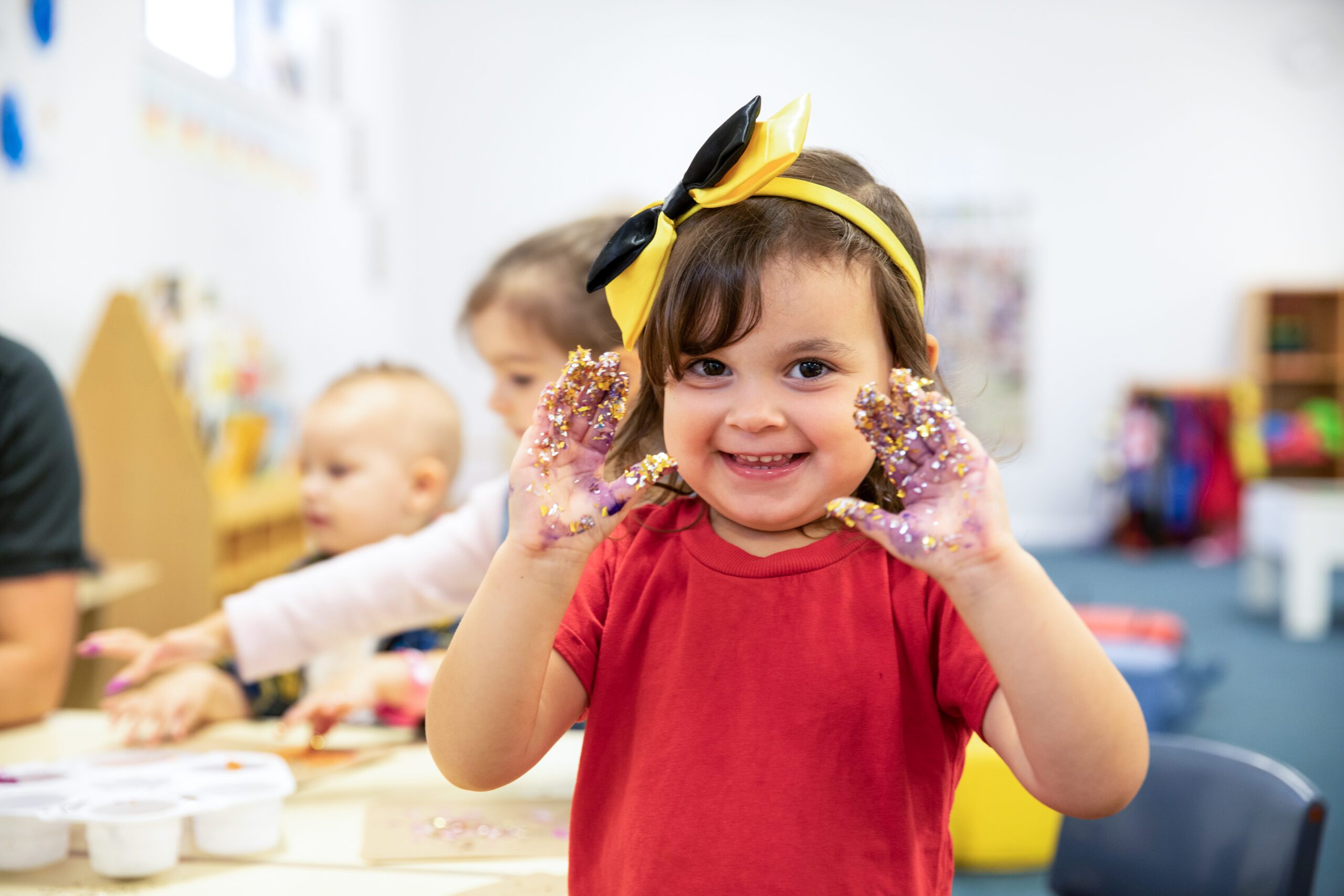
Post updated July 2025.
Sensory play, sometimes called messy play or hands-on play, is more than just fun. It’s one of the most powerful ways young children learn about their world. Whether it’s squishing playdough, running fingers through water, or listening to musical sounds, sensory play supports your child’s brain, body, and emotional development from the very beginning.
At Milestones Early Learning, sensory play is embedded throughout our Lifelong Learning Curriculum, guided by early childhood research and aligned with the Early Years Learning Framework and ACECQA Quality Areas 1 and 3. Every day, our educators create age-appropriate opportunities for children to explore textures, smells, sounds, sights, and movement, laying strong foundations for learning and wellbeing.
Here’s a look at how sensory play supports each stage of your child’s development, and how you can try it at home.
Babies (0–1 year): Exploring the World with Their Senses
From birth, babies use their senses to make sense of the world. Soft fabrics, gentle music, textured toys, and even tummy time in different environments help babies form early brain connections and learn how their bodies work.
Why it matters: Sensory play helps babies build hand-eye coordination, fine motor skills, and early communication. It also supports emotional regulation, as babies start to recognise soothing sounds, familiar smells, and comforting routines.
At our childcare centres, sensory play is a key focus in the nursery room.
Steph, Junior Nursery Lead Educator, shares: “We integrate sensory play into water play, ice painting, goop, and scented playdough. It gives babies a chance to engage their senses while lying down, sitting, or standing, wherever they are developmentally.”
These experiences are designed to match each child’s age and stage, helping them feel safe, supported, and ready to learn.
Toddlers (1–3 years): Busy Bodies, Curious Minds
Toddlers love to touch, squish, scoop, splash, and bang, often all at once! Their senses help them explore cause and effect, experiment with materials, and build their emerging independence.
Why it matters: Sensory play builds vocabulary (“It’s squishy!”), encourages problem-solving, and gives toddlers healthy ways to express big feelings. It also improves fine and gross motor skills and helps toddlers regulate their emotions.
The toddler rooms at Milestones are full of sensory discovery.
Rocelle, Lead Educator, says: “Through hands-on sensory experiences, our toddlers build confidence as they explore all five senses. They’re learning to create, imagine and express themselves, and that’s vital to their development.”
Preschoolers (3–5 years): Learning Through Play and Purpose
As children approach school age, sensory play supports more complex thinking, creativity, social interaction, and self-regulation. Whether they’re making potions, building with sand, or playing music, preschoolers are learning how the world works, and how they fit into it.
Why it matters: Sensory activities help preschoolers refine their motor skills, learn persistence, follow instructions, and collaborate with peers. These are essential skills for school readiness and lifelong learning.
Sensory play is woven into the School Readiness program in our Preschool and Kindergarten rooms.
Jasmine, Preschool Teacher, explains: “Sensory development is vital from an early age. We use colour, texture and sound to spark curiosity and help children safely engage with their surroundings. It supports brain development and memory, and it’s fun, which means they want to keep learning!”
Sensory Play Ideas to Try at Home
You don’t need fancy materials to support your child’s sensory learning at home. Here are a few simple, safe activities you can set up with items you already have:
1. Sensory Bottles
Fill empty bottles with coloured water, glitter, rice, or beads. Seal tightly. Shake, roll, and watch!
2. Nature Tray
Collect leaves, flowers, bark, or shells. Place them in a shallow box or tray and invite your child to explore by touching and smelling.
3. Textured Painting
Use cotton balls, sponges or feathers to paint with different strokes and sensations.
4. Scented Playdough
Make homemade playdough with flour, salt, water and food colouring. Add vanilla, cinnamon, or essential oils for an extra sensory layer.
Safety note: Always supervise sensory play, especially for children under 5. Use age-appropriate, non-toxic materials and avoid small pieces that could pose a choking hazard.
Why We Prioritise Sensory Play at Milestones
Sensory play is a cornerstone of the Lifelong Learning Curriculum because it supports the whole child - body, mind and heart. It promotes:
- Brain development and neural connections
- Language, fine motor, and social skills
- Creativity and emotional expression
- Confidence and independence
Whether it’s a toddler squishing mud between their fingers or a preschooler mixing colours with a brush, sensory play gives children the freedom to explore, discover and grow.
Looking for More Ideas?
Ask your child’s educators about the sensory activities happening in their room, or book a tour at your local Milestones Early Learning centre to see our play-based learning in action.
